-
 Bitcoin
Bitcoin $107,341.7259
0.15% -
 Ethereum
Ethereum $2,438.6204
0.70% -
 Tether USDt
Tether USDt $1.0003
-0.02% -
 XRP
XRP $2.1866
1.94% -
 BNB
BNB $649.0952
0.36% -
 Solana
Solana $150.9602
5.63% -
 USDC
USDC $0.9999
0.00% -
 TRON
TRON $0.2742
0.40% -
 Dogecoin
Dogecoin $0.1645
1.93% -
 Cardano
Cardano $0.5669
1.18% -
 Hyperliquid
Hyperliquid $37.8286
4.19% -
 Bitcoin Cash
Bitcoin Cash $491.4669
-2.74% -
 Sui
Sui $2.8150
3.06% -
 Chainlink
Chainlink $13.4184
2.91% -
 UNUS SED LEO
UNUS SED LEO $9.0809
0.27% -
 Avalanche
Avalanche $18.0295
2.60% -
 Stellar
Stellar $0.2396
1.19% -
 Toncoin
Toncoin $2.8587
0.13% -
 Shiba Inu
Shiba Inu $0.0...01160
2.59% -
 Litecoin
Litecoin $86.4192
1.45% -
 Hedera
Hedera $0.1486
1.19% -
 Monero
Monero $308.4324
0.87% -
 Polkadot
Polkadot $3.4202
1.43% -
 Bitget Token
Bitget Token $4.6436
-0.34% -
 Dai
Dai $0.9998
-0.02% -
 Ethena USDe
Ethena USDe $1.0002
0.00% -
 Uniswap
Uniswap $7.1527
3.29% -
 Pi
Pi $0.5357
-8.45% -
 Pepe
Pepe $0.0...09588
4.61% -
 Aave
Aave $259.9759
0.81%
What is MakerDAO?
MakerDAO, a decentralized autonomous organization, governs the Maker Protocol, issuing the DAI stablecoin. Users borrow DAI by locking collateral, and MKR token holders govern the system's risk management and future development.
Mar 11, 2025 at 05:00 pm
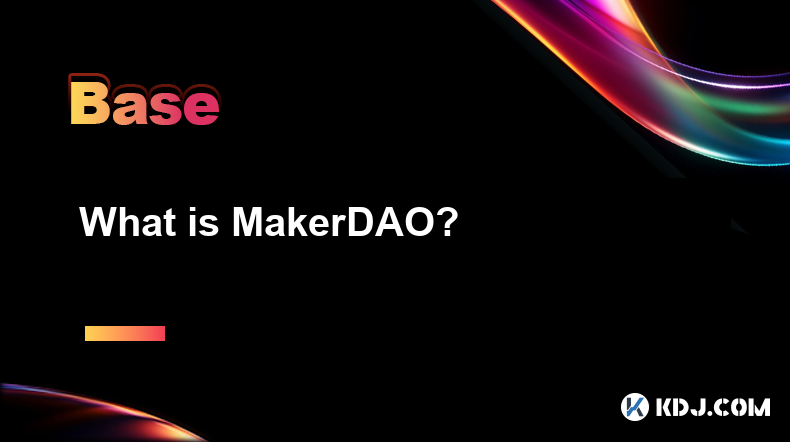
Key Points:
- MakerDAO is a decentralized autonomous organization (DAO) that governs the Maker Protocol.
- The Maker Protocol issues DAI, a stablecoin pegged to the US dollar.
- Users can borrow DAI by locking up collateral in the system.
- The system uses various collateral types, and risk management is crucial.
- Governance and decision-making within MakerDAO are decentralized and community-driven.
What is MakerDAO?
MakerDAO is a prominent decentralized autonomous organization (DAO) within the cryptocurrency ecosystem. It's responsible for overseeing and managing the Maker Protocol, a sophisticated system designed to create and maintain DAI, a stablecoin pegged to the US dollar. Unlike many cryptocurrencies whose value fluctuates wildly, DAI aims for price stability, making it attractive for various transactions and applications. The entire system operates on the Ethereum blockchain, leveraging its decentralized and transparent nature.
How does the Maker Protocol work?
The core functionality revolves around collateralized debt positions (CDPs). Users who want to borrow DAI must first lock up cryptocurrency as collateral within the system. This collateral can include various crypto assets, each carrying different risk assessments and liquidation thresholds. The amount of DAI a user can borrow depends on the value and risk profile of their deposited collateral. The system automatically liquidates under-collateralized CDPs to protect against losses.
What are CDPs and how are they managed?
A CDP, or Collateralized Debt Position, is essentially a smart contract that allows users to borrow DAI. To create a CDP, users deposit approved collateral (like ETH or other supported assets) into a smart contract. The Maker Protocol then mints DAI based on the value of the collateral, up to a certain percentage. This percentage is determined by the risk assessment of the collateral asset. The system constantly monitors the value of the collateral; if it falls below a certain threshold, the CDP is automatically liquidated to repay the borrowed DAI.
What are the different types of collateral accepted by MakerDAO?
The Maker Protocol accepts a range of crypto assets as collateral, each with a different risk rating. Initially, ETH was the primary collateral, but over time, the system has expanded to include other cryptocurrencies. The inclusion of new collateral types is subject to rigorous risk assessment and governance votes within MakerDAO. This diversification of collateral aims to reduce the overall risk of the system and increase its resilience. The accepted collateral assets and their risk parameters are constantly reviewed and updated.
What is DAI and its significance?
DAI is a stablecoin issued by the Maker Protocol, designed to maintain a stable 1:1 peg with the US dollar. This stability is achieved through a complex algorithm and the use of collateralized debt positions. Unlike volatile cryptocurrencies, DAI’s relative stability makes it attractive for various applications, including payments, decentralized finance (DeFi) applications, and as a store of value for users seeking to avoid the volatility of other cryptocurrencies. It plays a vital role in the DeFi ecosystem.
How is MakerDAO governed?
MakerDAO operates under a decentralized governance model. MKR token holders have voting rights on key decisions regarding the protocol, such as adding new collateral types, adjusting risk parameters, and making changes to the system's algorithms. This decentralized governance structure allows for community participation in shaping the future of the Maker Protocol and DAI. Proposals are submitted, discussed, and voted upon by MKR token holders, ensuring a transparent and community-driven decision-making process.
What are the risks associated with MakerDAO and DAI?
While DAI strives for stability, it is not entirely risk-free. The value of the collateral backing DAI can fluctuate, potentially leading to liquidations if the collateral falls below a certain threshold. Furthermore, vulnerabilities in the smart contracts that govern the protocol could be exploited. MakerDAO actively works to mitigate these risks through regular audits, security improvements, and risk management strategies. However, users should understand that there are inherent risks associated with using any decentralized system.
What is the role of MKR tokens?
MKR tokens are the governance tokens of MakerDAO. Holding MKR grants voting rights on key decisions affecting the Maker Protocol. MKR holders participate in governance proposals, influencing the direction of the project and its response to market changes. Furthermore, MKR tokens play a crucial role in the stability of DAI. They are used to stabilize the system in times of stress and help maintain the 1:1 peg with the US dollar. Their value is closely tied to the health and stability of the Maker Protocol.
What is the future of MakerDAO?
The future of MakerDAO depends on several factors, including the continued adoption of DAI, the success of its governance model, and the evolution of the DeFi ecosystem. MakerDAO is constantly exploring new avenues for growth and innovation, including the addition of new collateral types and the expansion of its functionalities. The ongoing development and adoption of the Maker Protocol will significantly influence its future trajectory within the cryptocurrency space.
Frequently Asked Questions:
Q: Is DAI truly stable?
A: While DAI aims for a 1:1 peg with the USD, its stability is not guaranteed. Fluctuations in collateral value can impact its price.
Q: How can I get DAI?
A: You can obtain DAI by locking up approved collateral in a CDP and borrowing against it. You can also purchase DAI on various cryptocurrency exchanges.
Q: What are the risks of using MakerDAO?
A: Smart contract vulnerabilities, collateral price fluctuations, and system-wide attacks are potential risks.
Q: How does MakerDAO handle liquidations?
A: When collateral value falls below a certain threshold, CDPs are automatically liquidated to repay borrowed DAI.
Q: What is the role of MKR token holders?
A: MKR holders govern the Maker Protocol by voting on proposals related to its operation and development.
Q: Is MakerDAO centralized or decentralized?
A: MakerDAO is a decentralized autonomous organization (DAO), governed by its MKR token holders.
Q: Can I use any cryptocurrency as collateral?
A: No, only cryptocurrencies approved by MakerDAO's governance process can be used as collateral.
Q: What happens if a CDP is liquidated?
A: The collateral is sold to repay the borrowed DAI. If the collateral value is insufficient, the user may lose their entire deposit.
Disclaimer:info@kdj.com
The information provided is not trading advice. kdj.com does not assume any responsibility for any investments made based on the information provided in this article. Cryptocurrencies are highly volatile and it is highly recommended that you invest with caution after thorough research!
If you believe that the content used on this website infringes your copyright, please contact us immediately (info@kdj.com) and we will delete it promptly.
- XRP, Ripple, and Bitcoin: Decoding the Latest Crypto Moves
- 2025-06-29 08:30:13
- NBA Legend Scottie Pippen's Crypto Picks: SHIB and XRP in the Spotlight
- 2025-06-29 08:50:12
- Bitcoin, US Strategy, and Cryptocurrency Regulation: Navigating the Digital Frontier
- 2025-06-29 09:10:13
- Chainlink's $17 Breakout: Bullish Momentum Fueled by Mastercard Partnership
- 2025-06-29 08:30:13
- Crypto Launches Q3 2025: Top Picks to Watch
- 2025-06-29 09:10:13
- Gemini AI's 2025 Crypto Forecast: Altcoin Boom Ahead?
- 2025-06-29 08:52:14
Related knowledge
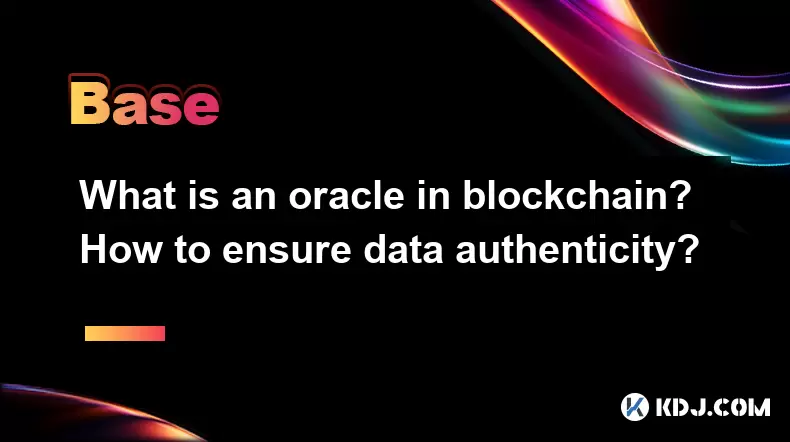
What is an oracle in blockchain? How to ensure data authenticity?
Jun 19,2025 at 08:49pm
Understanding the Role of an Oracle in BlockchainIn the context of blockchain technology, an oracle serves as a bridge between the blockchain and external data sources. While blockchains are inherently secure and decentralized, they cannot access real-world information on their own. Oracles enable smart contracts to interact with off-chain data such as ...
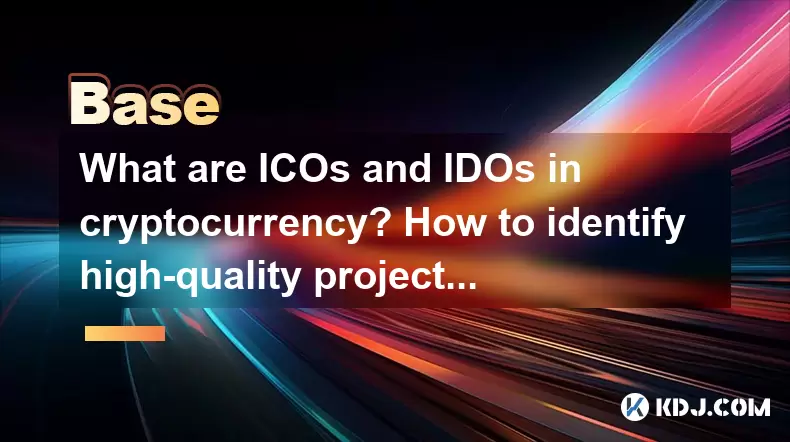
What are ICOs and IDOs in cryptocurrency? How to identify high-quality projects?
Jun 22,2025 at 11:49am
Understanding ICOs in CryptocurrencyInitial Coin Offerings (ICOs) are fundraising mechanisms used by cryptocurrency startups to raise capital for their projects. In an ICO, a company creates and sells its own tokens to investors in exchange for established cryptocurrencies like Bitcoin or Ethereum. The process typically involves the release of a whitepa...
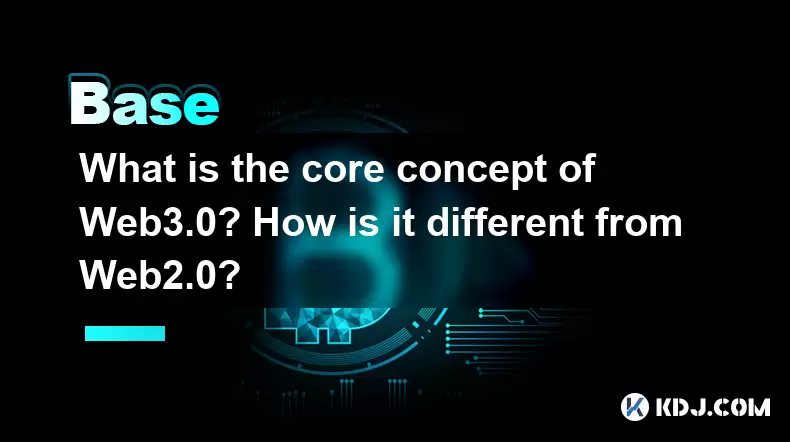
What is the core concept of Web3.0? How is it different from Web2.0?
Jun 21,2025 at 05:56pm
Decentralization as the Foundation of Web3.0The core concept of Web3.0 revolves around decentralization, which fundamentally challenges the centralized architecture of Web2.0. In Web3.0, control and ownership are distributed across a network rather than being held by a central authority or corporation. This is achieved primarily through blockchain techn...
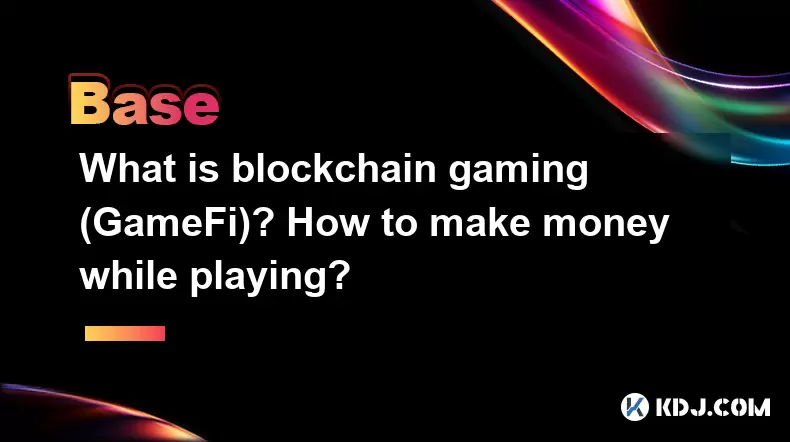
What is blockchain gaming (GameFi)? How to make money while playing?
Jun 20,2025 at 07:56am
Understanding Blockchain Gaming (GameFi)Blockchain gaming, often referred to as GameFi, is a fusion of blockchain technology and video games. It enables players to own in-game assets through non-fungible tokens (NFTs) and earn rewards via cryptocurrencies or token-based systems. Unlike traditional games where items are controlled by centralized develope...
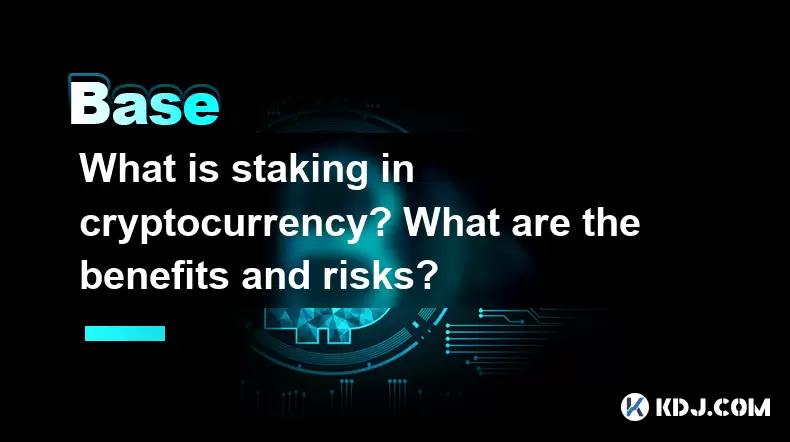
What is staking in cryptocurrency? What are the benefits and risks?
Jun 22,2025 at 10:01am
Understanding the Concept of Staking in CryptocurrencyStaking in cryptocurrency refers to the process of actively participating in transaction validation on a blockchain network that uses a Proof-of-Stake (PoS) consensus mechanism. Instead of miners competing to solve complex mathematical puzzles as in Proof-of-Work systems like Bitcoin, PoS blockchains...
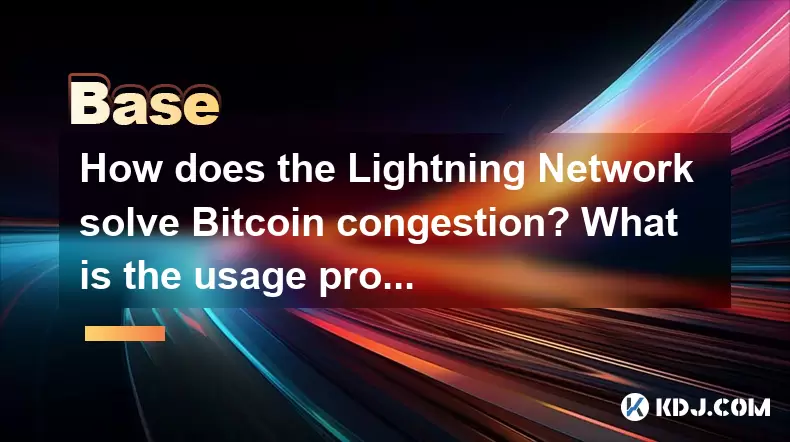
How does the Lightning Network solve Bitcoin congestion? What is the usage process?
Jun 23,2025 at 06:21pm
Understanding Bitcoin Network CongestionBitcoin, as a decentralized digital currency, operates on a blockchain that records every transaction in a public ledger. Each block has a limited size, typically 1 megabyte, which allows for only a certain number of transactions per second (TPS). When the number of transactions increases, the network becomes cong...

What is an oracle in blockchain? How to ensure data authenticity?
Jun 19,2025 at 08:49pm
Understanding the Role of an Oracle in BlockchainIn the context of blockchain technology, an oracle serves as a bridge between the blockchain and external data sources. While blockchains are inherently secure and decentralized, they cannot access real-world information on their own. Oracles enable smart contracts to interact with off-chain data such as ...

What are ICOs and IDOs in cryptocurrency? How to identify high-quality projects?
Jun 22,2025 at 11:49am
Understanding ICOs in CryptocurrencyInitial Coin Offerings (ICOs) are fundraising mechanisms used by cryptocurrency startups to raise capital for their projects. In an ICO, a company creates and sells its own tokens to investors in exchange for established cryptocurrencies like Bitcoin or Ethereum. The process typically involves the release of a whitepa...

What is the core concept of Web3.0? How is it different from Web2.0?
Jun 21,2025 at 05:56pm
Decentralization as the Foundation of Web3.0The core concept of Web3.0 revolves around decentralization, which fundamentally challenges the centralized architecture of Web2.0. In Web3.0, control and ownership are distributed across a network rather than being held by a central authority or corporation. This is achieved primarily through blockchain techn...

What is blockchain gaming (GameFi)? How to make money while playing?
Jun 20,2025 at 07:56am
Understanding Blockchain Gaming (GameFi)Blockchain gaming, often referred to as GameFi, is a fusion of blockchain technology and video games. It enables players to own in-game assets through non-fungible tokens (NFTs) and earn rewards via cryptocurrencies or token-based systems. Unlike traditional games where items are controlled by centralized develope...

What is staking in cryptocurrency? What are the benefits and risks?
Jun 22,2025 at 10:01am
Understanding the Concept of Staking in CryptocurrencyStaking in cryptocurrency refers to the process of actively participating in transaction validation on a blockchain network that uses a Proof-of-Stake (PoS) consensus mechanism. Instead of miners competing to solve complex mathematical puzzles as in Proof-of-Work systems like Bitcoin, PoS blockchains...

How does the Lightning Network solve Bitcoin congestion? What is the usage process?
Jun 23,2025 at 06:21pm
Understanding Bitcoin Network CongestionBitcoin, as a decentralized digital currency, operates on a blockchain that records every transaction in a public ledger. Each block has a limited size, typically 1 megabyte, which allows for only a certain number of transactions per second (TPS). When the number of transactions increases, the network becomes cong...
See all articles

























































































